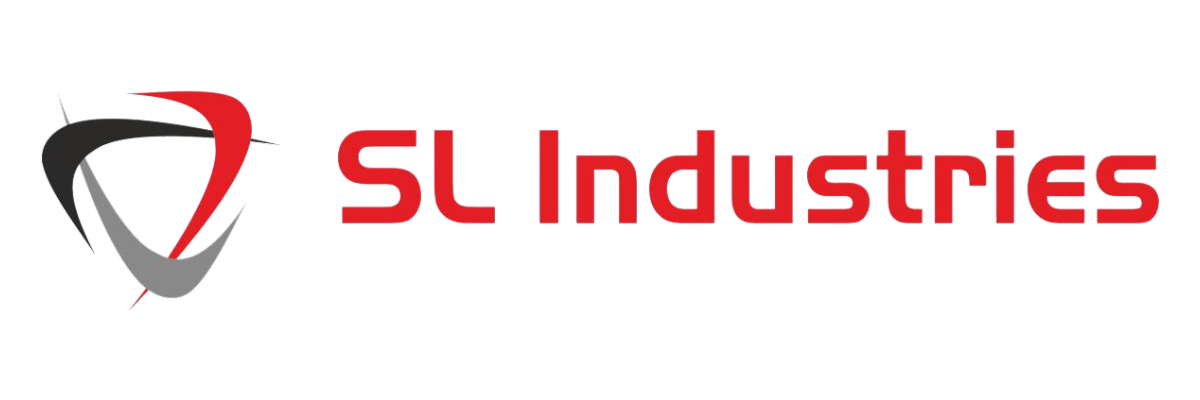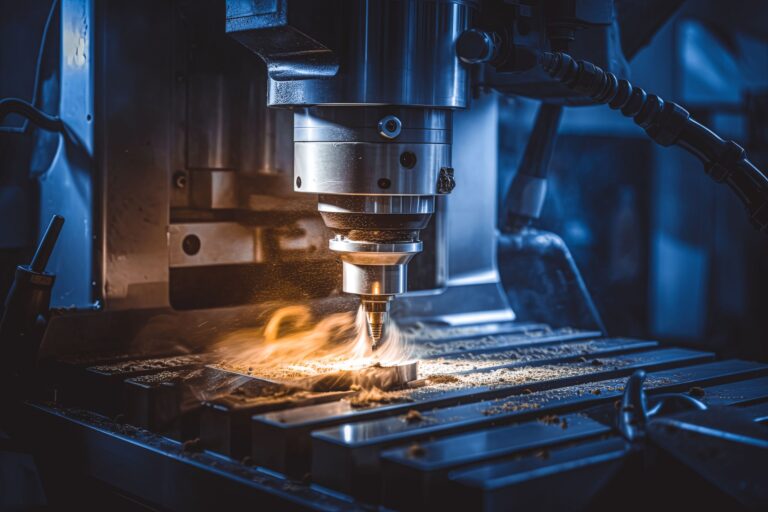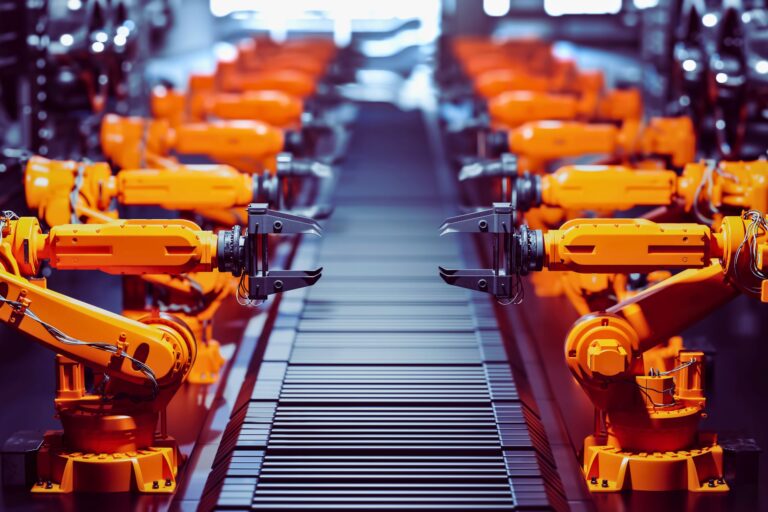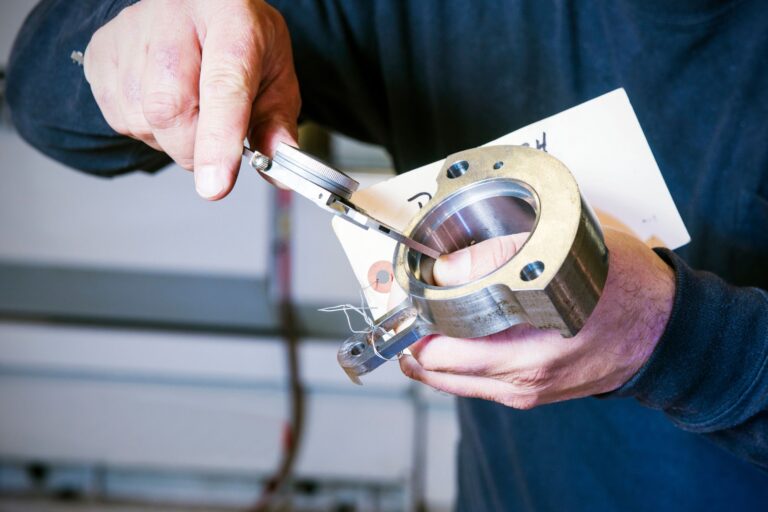В аерокосмическата, автомобилната, енергийната и прецизната инженерна промишленост производителите са подложени на натиск да увеличат производителността, като същевременно намалят въздействието върху околната среда и общите разходи за притежание. Режещо-струйните течности – някога третирани като стока за производствените помещения – сега са стратегически лост за производителност, устойчивост и безопасност на работниците. Тази статия разглежда практически пътища към по-екологична машинна обработка: Минимално количество смазване (MQL), суха обработка, и модерно управление на охлаждащата течност.
Защо течностите са важни
Режещо-струйните течности влияят върху отвеждането на топлина, триенето, отвеждането на стружките, живота на инструмента, целостта на повърхността и размерната стабилност. Лошият контрол на течностите води до брак, преработка, престой на машините, миризми, случаи на дерматит и разходи за изхвърляне на отпадъци. Оптимизираните стратегии могат да осигурят двуцифрени увеличения на живота на инструмента и производителността, като същевременно намаляват потреблението на течности с порядъци.
Вариант 1: Смазване с минимално количество (MQL)
Какво е то. MQL доставя фино атомизиран аерозол – обикновено 10–100 мл/час – директно в зоната на рязане. За разлика от охлаждането с наводняване, MQL се фокусира върху смазване първо, използвайки сгъстен въздух за пренасяне на микродоза биоразградимо масло.
Където блести.
- Високоскоростно фрезоване и пробиване от алуминий и цветни сплави
- Нарязване на резба и разпробиване с трудно отвеждане на стружките
- Почти сухо завиване където топлинните натоварвания са предвидими
Ползи.
- Значително по-ниска употреба на течности (мл/час спрямо литри/минута)
- Почистващи части и стружкиопростено пране и рециклиране
- По-дълъг живот на инструмента от гранично смазване в контактната зона
- Подобрена устойчивост чрез биоразградими масла на естерна основа
Съображения.
- Изисква прецизно подравняване на дюзите и стабилно атмосферно налягане
- Може да се нуждае доставка чрез инструменти на свредла/фрези с малък диаметър
- Топлината се управлява предимно чрез евакуация на чипове, не обемно охлаждане
Вариант 2: Суха обработка
Какво е то. Елиминира напълно течната охлаждаща течност, разчитайки на оптимизирани покрития на инструментите (TiAlN, AlCrN), геометрии и параметри на рязане за управление на топлината чрез стружките.
Където работи.
- Чугун груби операции
- Сигурно твърдо завиване и високоскоростно довършително покритие рутини
- Операции с надежден контрол на стружките и твърдо закрепване
Ползи.
- Нулево закупуване и изхвърляне на охлаждаща течност
- Без етап на измиванечастите излизат от почистващото устройство на машината
- Опростено съответствие с изискванията за опазване на околната среда, здравето и безопасността (намалени мъгли и остатъци)
Съображения.
- Риск от термично изкривяване върху тънкостенни части
- Изискванията стабилно захващане на инструмента и оптимизирани траектории на инструмента
- Може да пренася топлина в детайла - проверете размерната стабилност
Вариант 3: По-интелигентно управление на охлаждащата течност (когато е необходимо наводняване)
Когато охлаждането от наводнение остава правилният избор – например суперсплави, дълбоко пробиване, смилане—съвременният мениджмънт прави разликата.
Химия и селекция.
- Изберете между синтетични, полусинтетични или на естерна основа охлаждащи течности; по възможност се насочете към химикали с ниско съдържание на летливи органични съединения (ЛОС), без бор и формалдехид,
- Съпоставяне на пакетите с добавки с материала: EP добавки за никелови сплави; инхибитори на корозия за чугун; пеногасители за системи с високо налягане.
Здраве на картера.
- Контрол концентрация (рефрактометър/автоматични смесители), pH, и проводимост
- Премахване масло за скитници (скимери/коалесценти) за ограничаване на растежа на бактериите
- Използвайте филтрация (торба, магнитна, циклонна, вакуумна) оразмерена според натоварването с стружки и зърнени частици
- Прилагане биостабилен формулировки и рутинни микробиологични проверки
Спрей и хигиена.
- Приложи високоефективни колектори за мъгла с подходящ обратен поток
- Поддържайте уплътненията на корпуса и конвейерите за стружки, за да намалите изтичането на аерозоли
Минимизиране на отпадъците.
- Удължи живот на картера чрез непрекъснато кондициониране; разделяне на потоците за рециклиране
- Проследяване литри, изразходвани на част и кг чипс на литър като ключови показатели за ефективност (KPI)
Интеграция на процесите: Инструментална екипировка, CAM и настройка на машината
- Покрития и геометрии: Комбинирайте MQL/сухо с топлоустойчиви покрития и конструкции на стружкочупещи устройства, съобразени със сплавта.
- Доставка чрез инструменти: За дълбоки черти, предпочитайте вътрешен MQL или охлаждаща течност под високо налягане с филтрирана среда.
- Траектории на инструмента: Използвайте трохоидални и постоянно ангажирани стратегии за стабилизиране на топлината.
- Приспособление: Твърдите, термично изолирани приспособления намаляват изкривяването при намалено охлаждане.
Качество и целостност на повърхността
Устойчивите стратегии трябва да запазят (или подобрят) качеството:
- Проверка Ra/Rz, избягване на белия слой (твърдо струговане) и остатъчно напрежение където умората е от значение.
- Монитор размерен дрейф по време на загряване; адаптирайте отместванията чрез метрологични данни в процеса.
- За смилане, контрол изгаряне със спецификации на колелата, графици за обработка и скорост на охлаждащата течност.
Ключови показатели за ефективност (KPI) за проследяване
- Живот на инструмента (части/острие) и цена на част
- Разход на охлаждаща течност (мл или л на детайл) и живот на картера (дни)
- Добив при първо преминаване (FPY) и Cp/Cpk за критични размери
- Нива на мъгла в мг/м³; pH и бионатоварване в картера
- Енергия на част (шпиндел + помпи + спомагателни устройства)
Пътна карта за внедряване
- Базов одит: Определете количествено текущите обеми на флуидите, разходите за изхвърляне, живота на инструментите и циклите на измиване.
- Изберете пилоти: Изберете 1–2 операции с висока употреба на течности или проблеми с хигиената.
- Провеждане на пробни изпълнения: Сравнете наводняване, MQL и сухо нанасяне; стандартизирайте CAM стратегиите и инструментите.
- Измерване и итерация: Запишете горните ключови показатели за ефективност (KPI); настройте дюзите, параметрите и химикалите.
- Стандартизиране и мащабиране: Документирайте най-добрите практики (листове за настройка, контролни списъци), обучете операторите и ги внедрете в подобни клетки.
Нововъзникващи подходи (използвайте селективно)
- Хибридно охлаждане: MQL + CO₂ или LN₂ за суперсплави и тънкостенни части
- Интелигентно дозиране: Смесители на охлаждаща течност със затворен контур, свързани с рефрактометри
- Екомаркировки и LCA: Изберете течности с прозрачни данни за околната среда
Гледайки напред
Очаква се по-широко приемане почти суха обработка, сензорно управление на охлаждащата течност, и рециклируеми, биобазирани химикалиВ съчетание с вътрешнопроцесна метрология и цифрови близнаци, стратегиите за флуиди ще бъдат настройвани динамично, за да балансират живота на инструмента, енергията и качеството в реално време.
В SL Industries, ние оценяваме и внедряваме устойчиви практики за машинна обработка, които измеримо подобряват живот на инструмента, чистота, безопасност на оператора и цена на детайл—помагане на нашите клиенти да постигнат целите си за ефективност, като същевременно постигат екологични цели.






